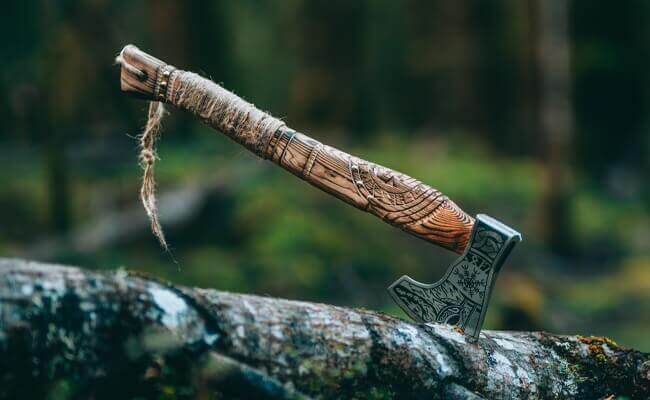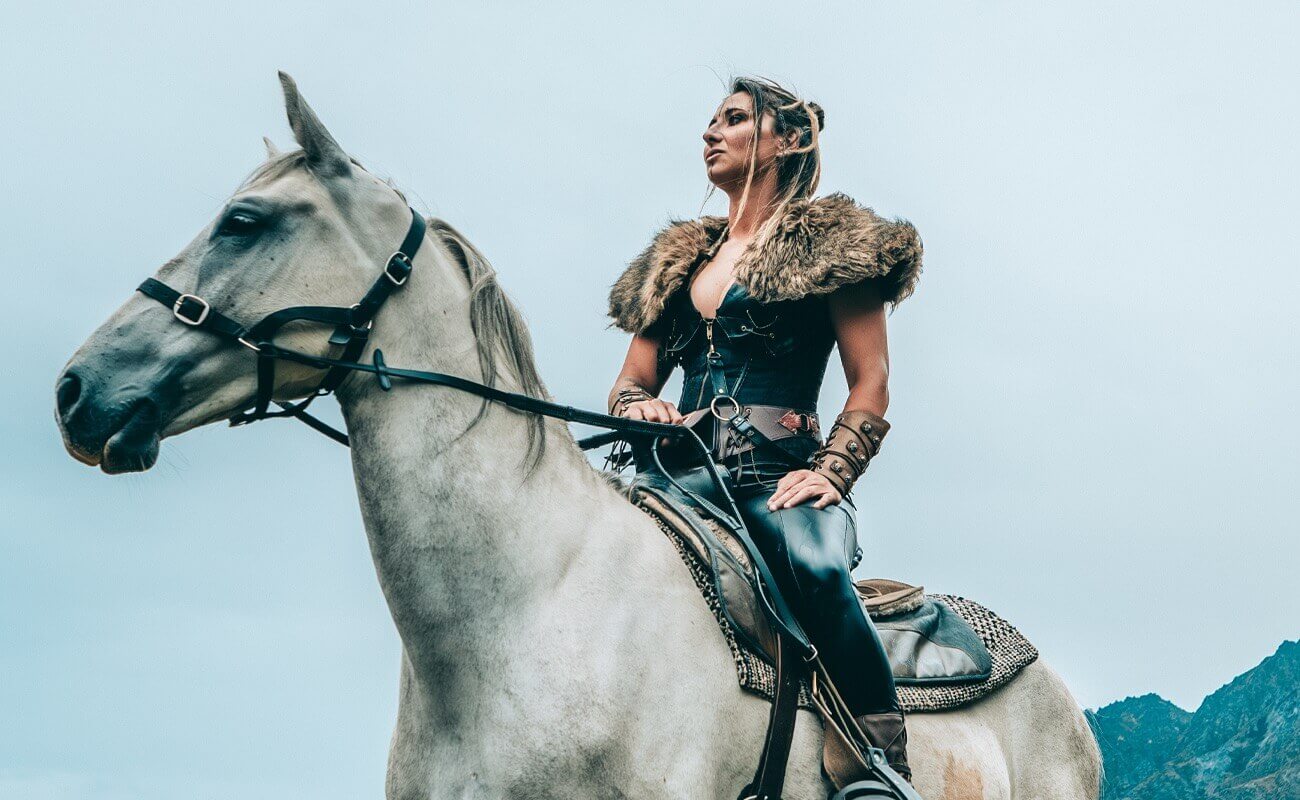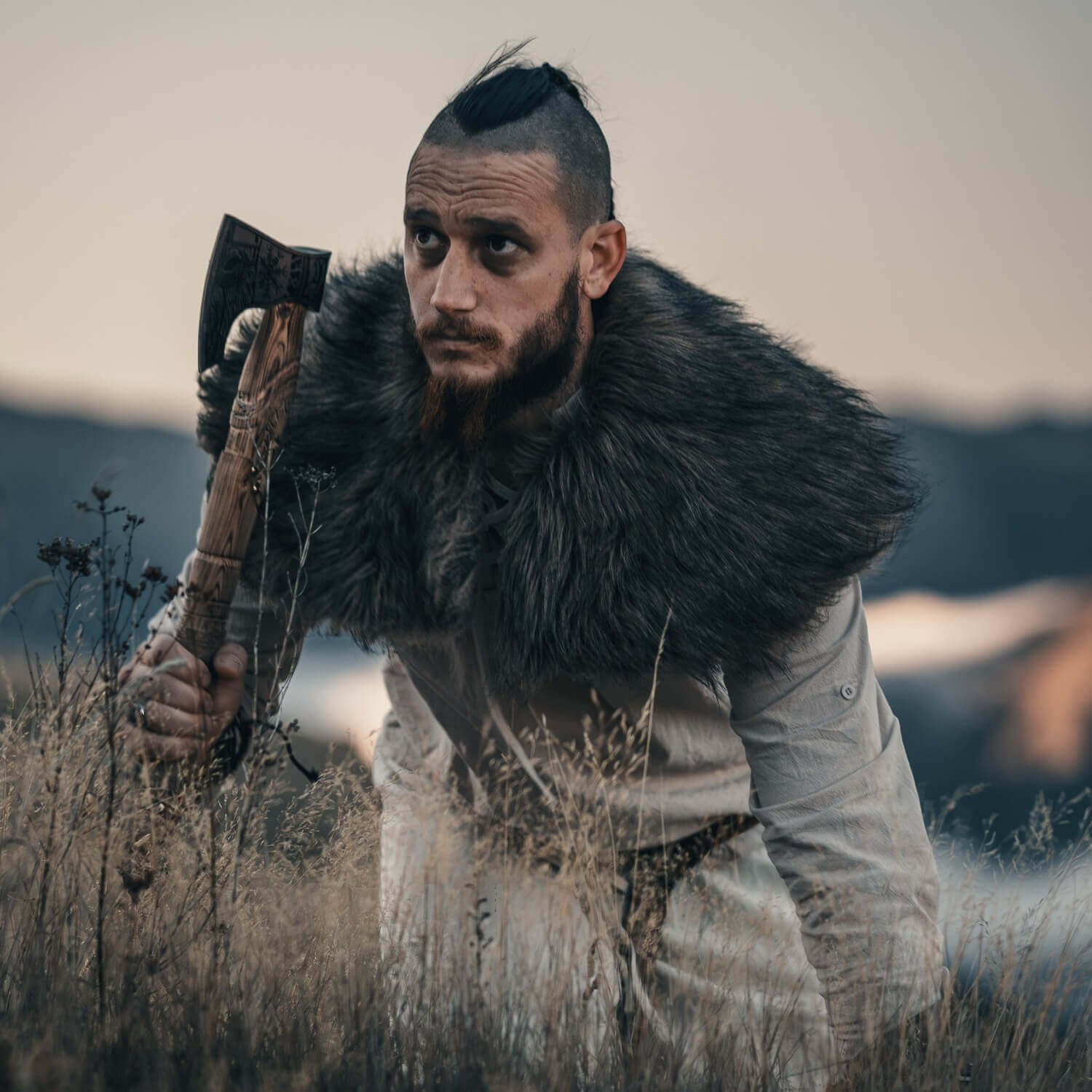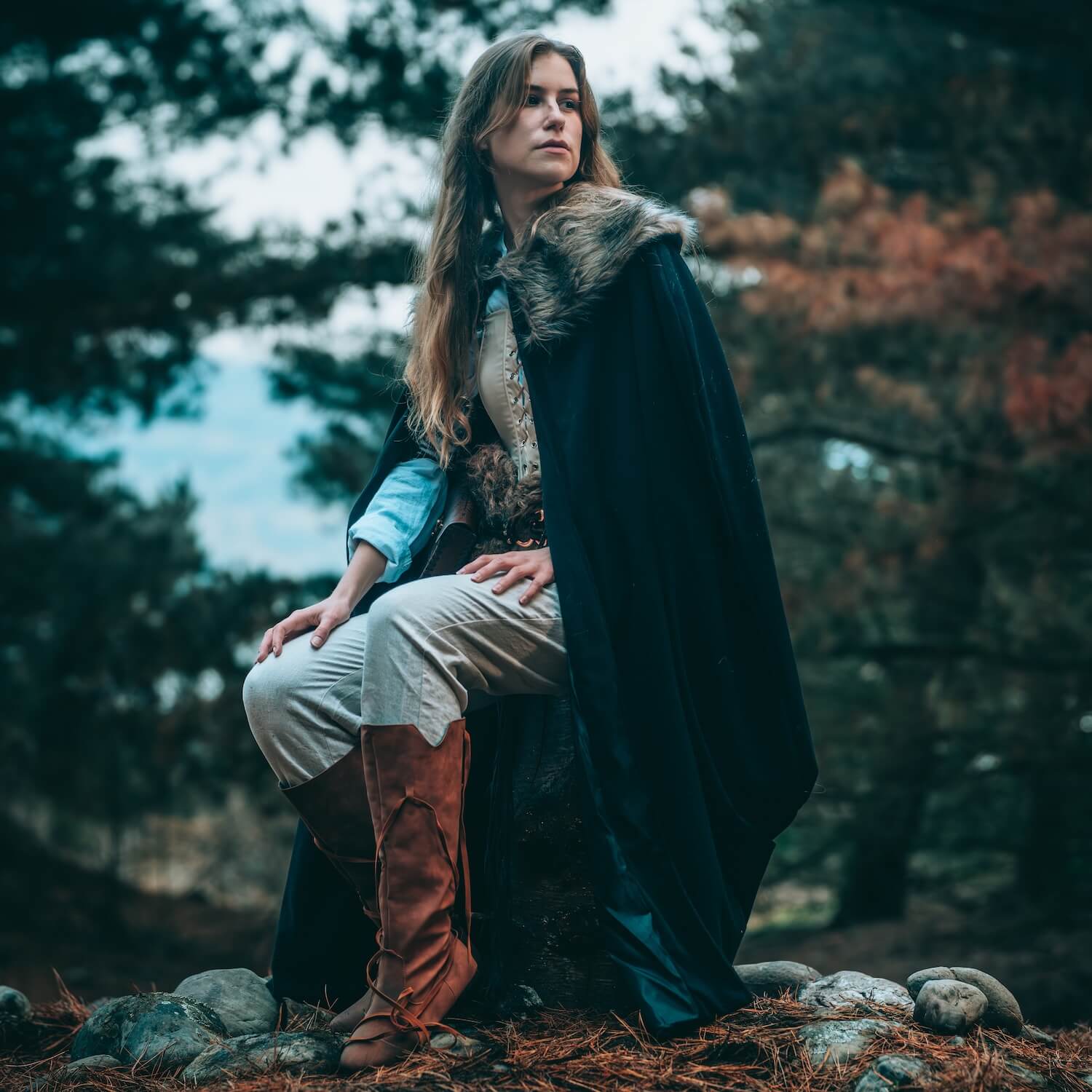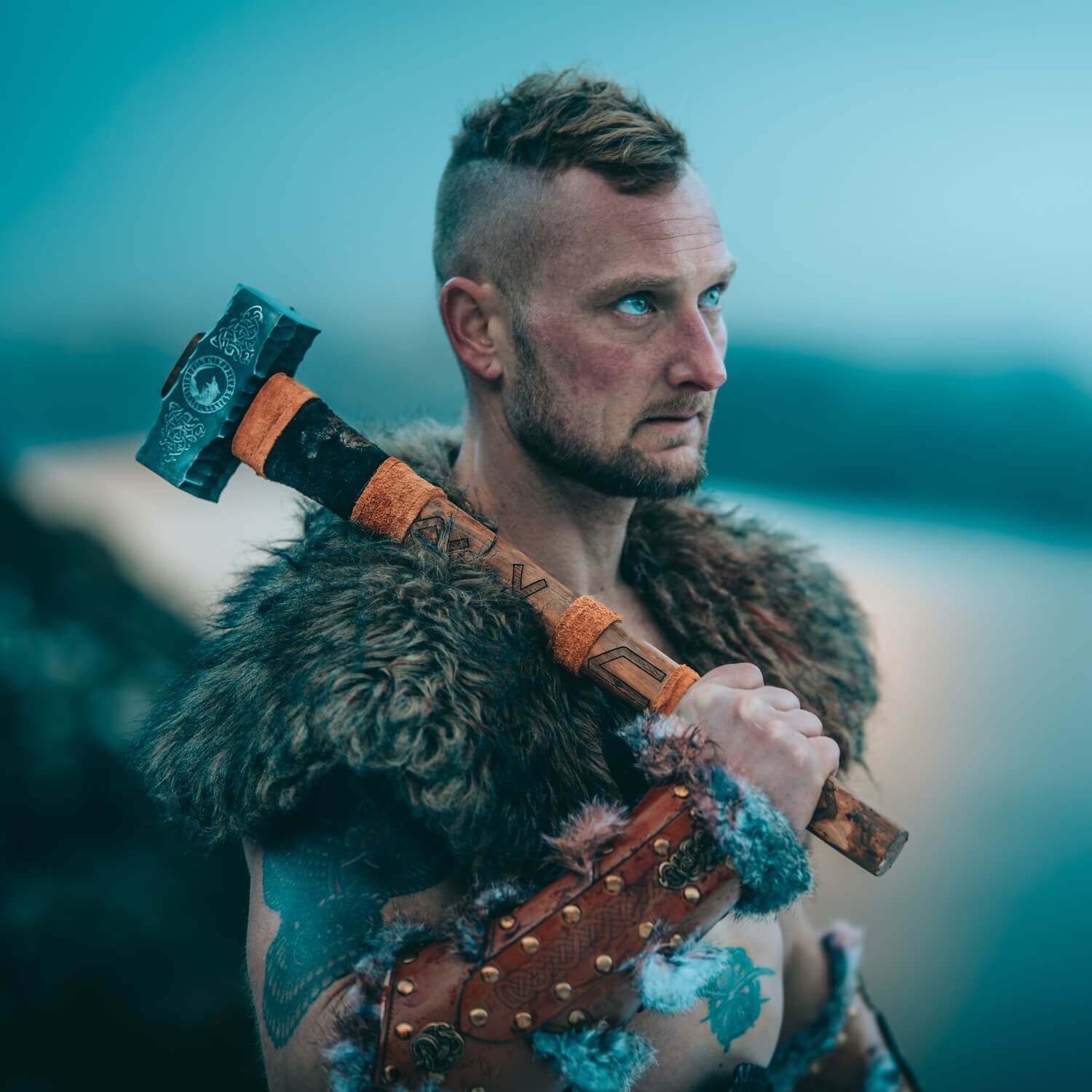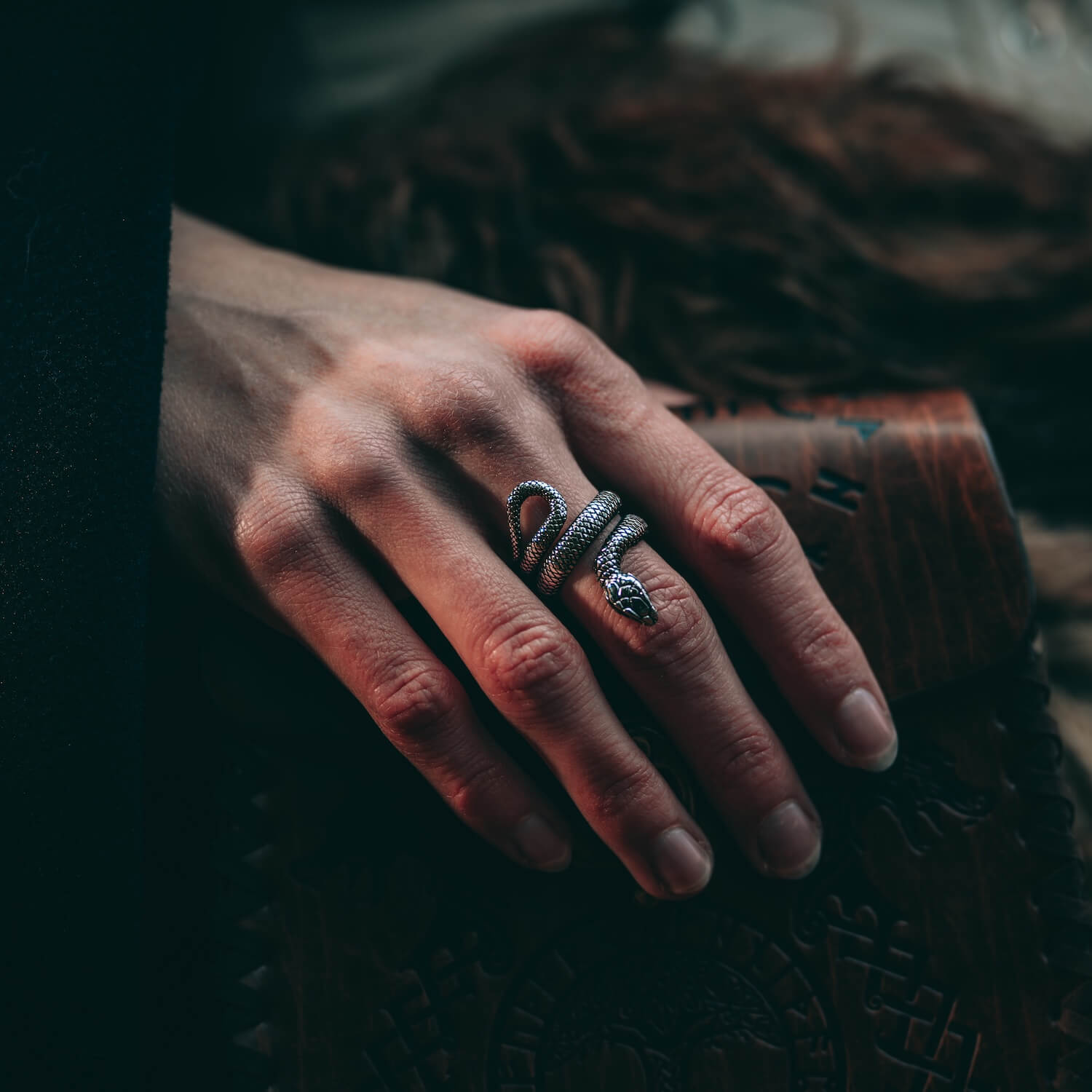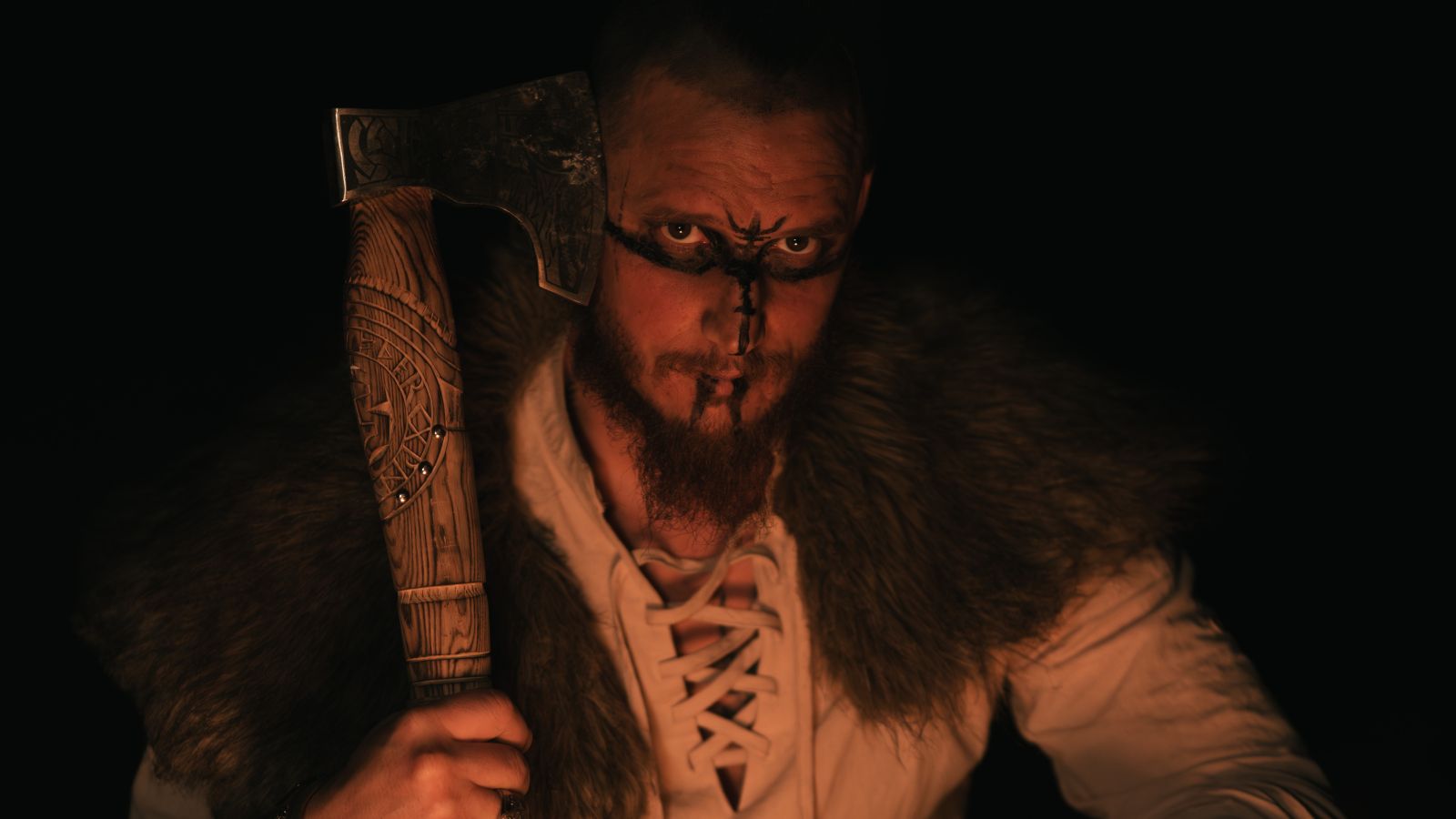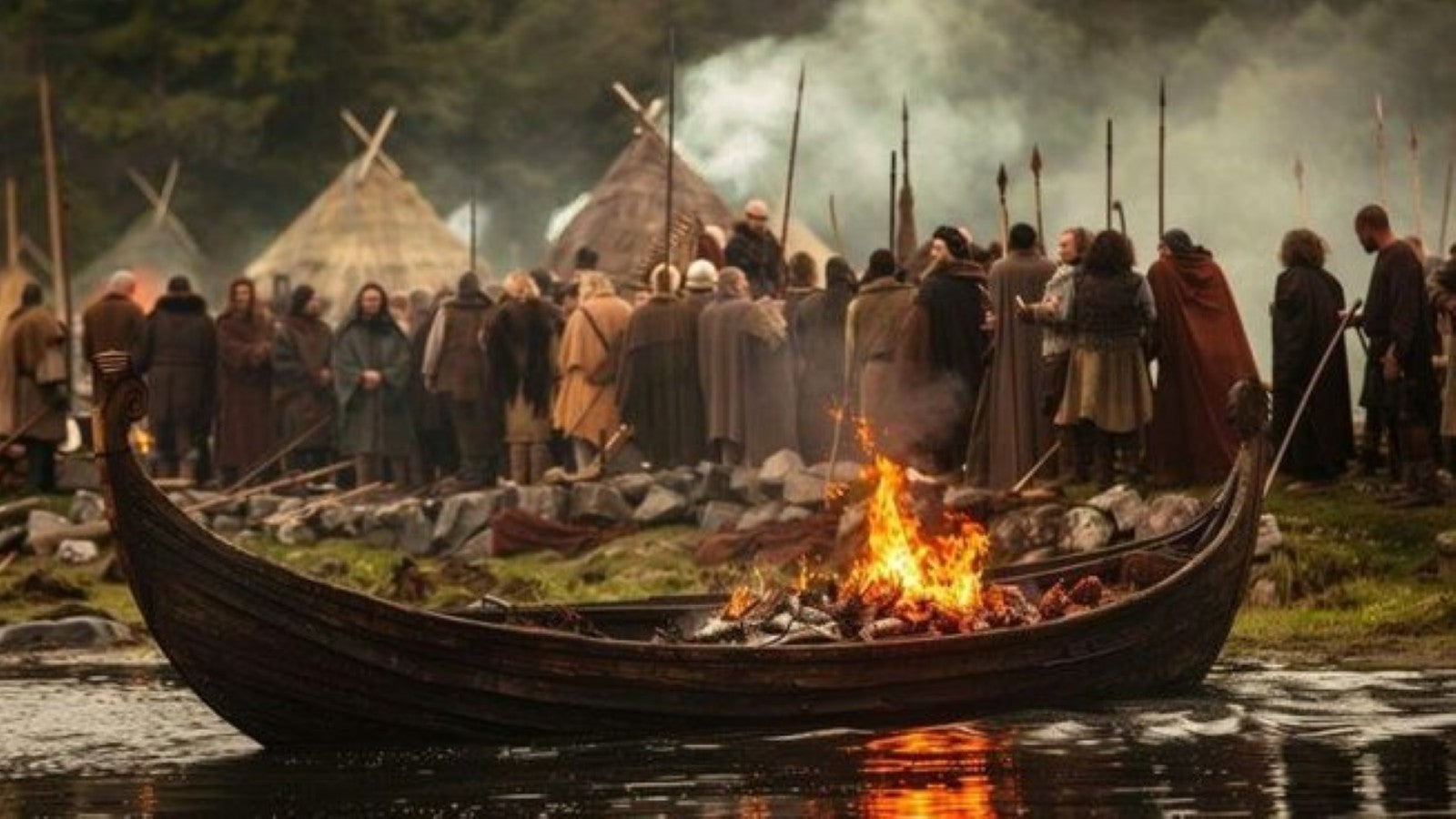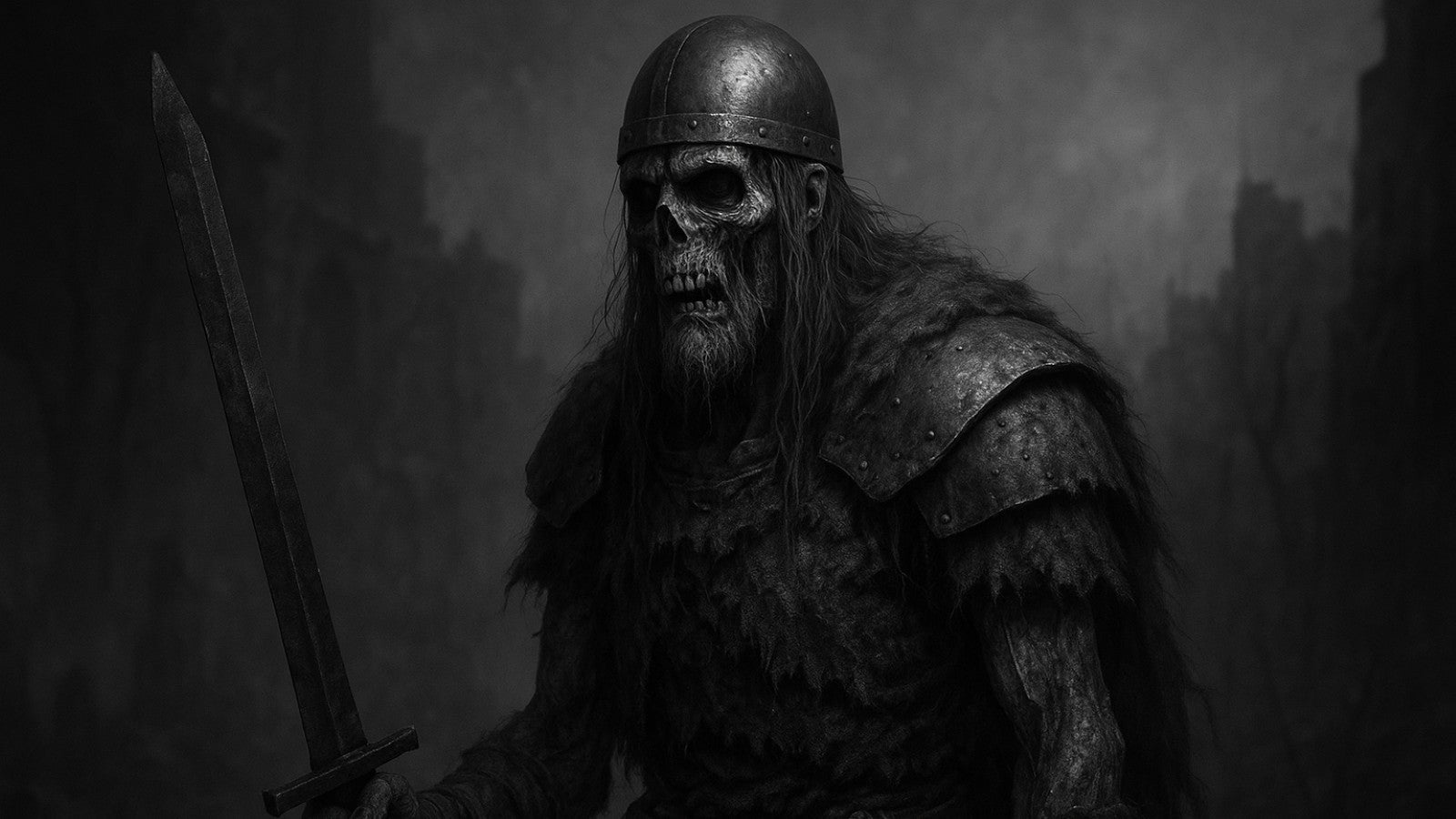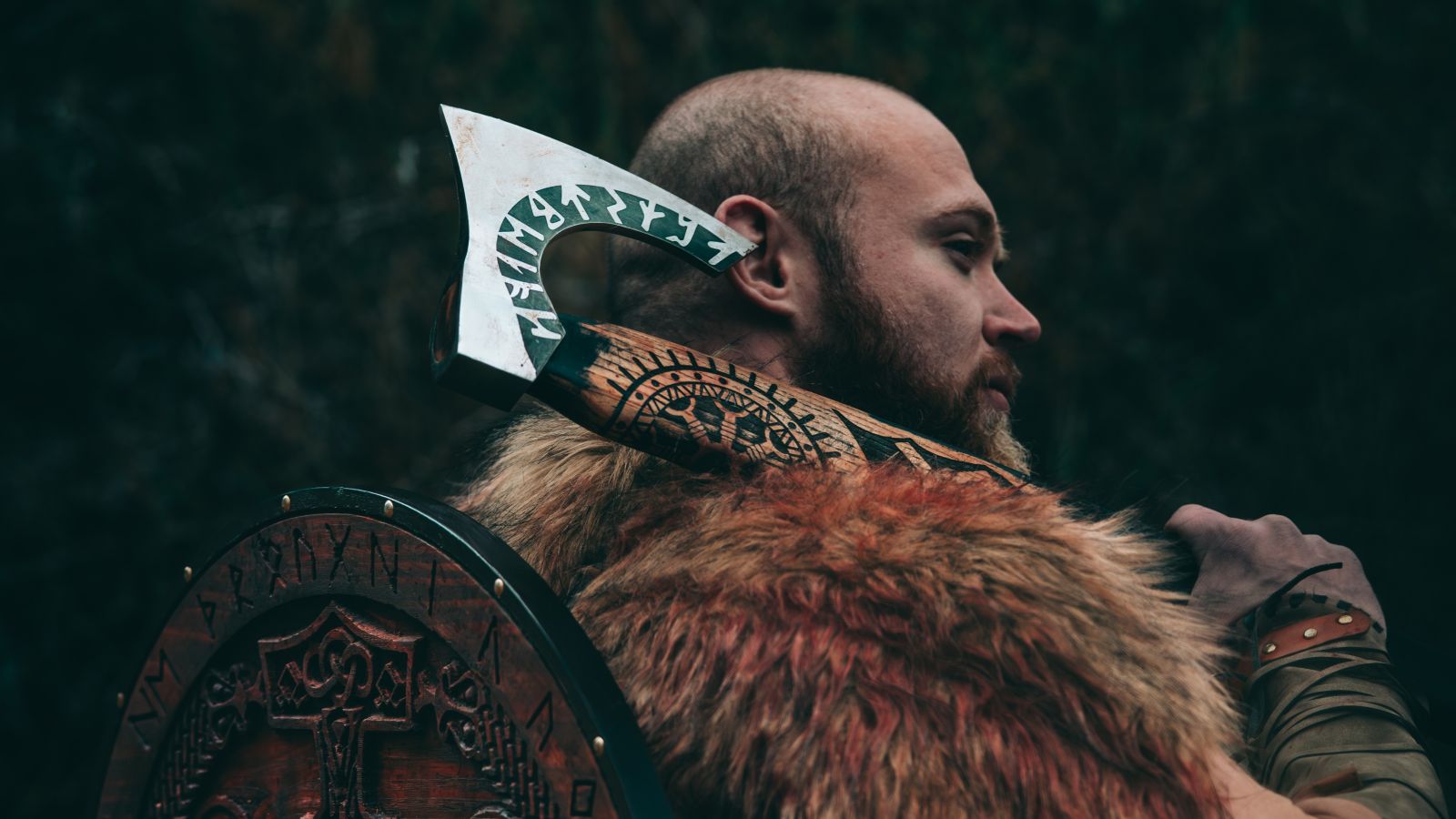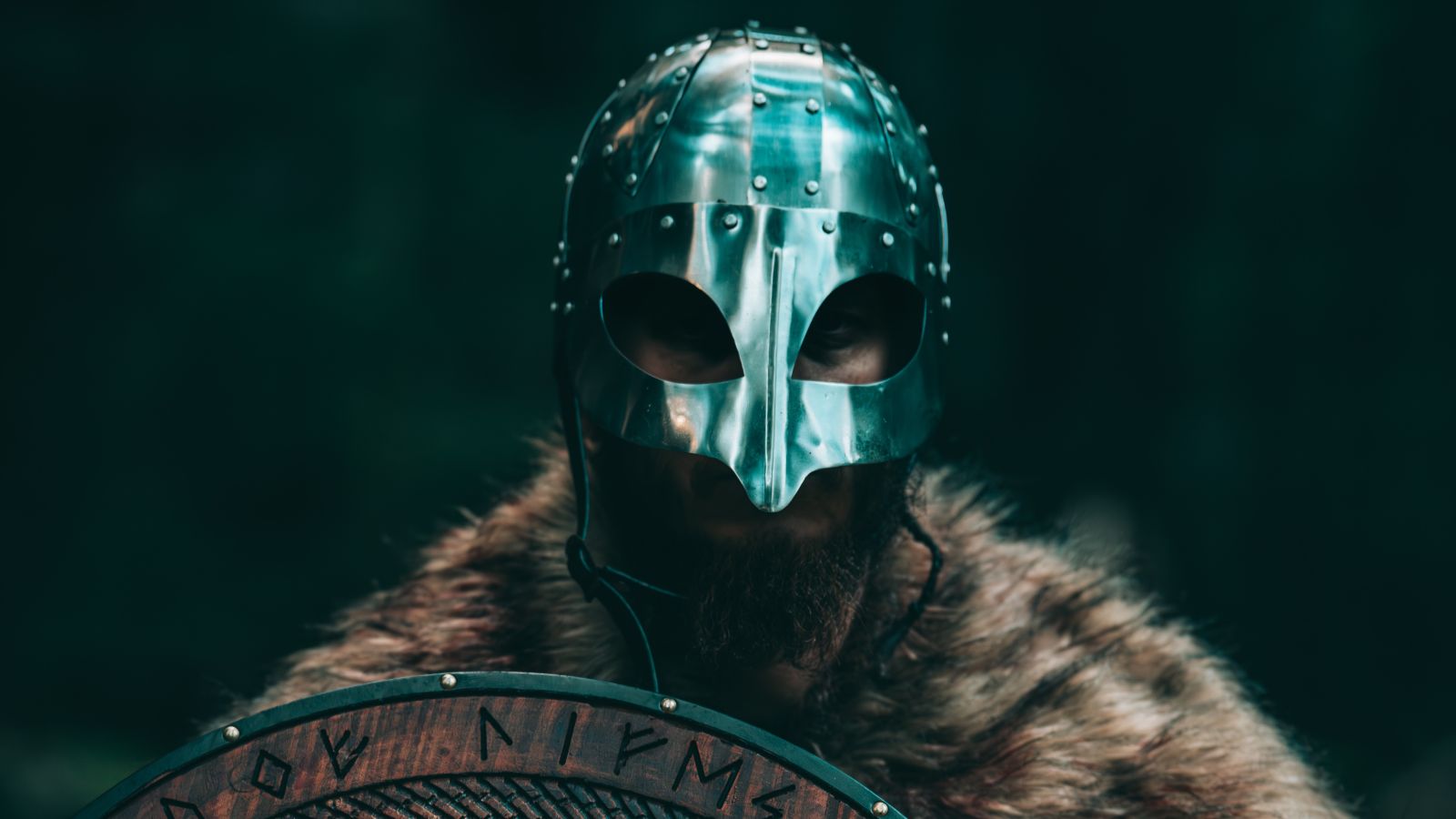
The Truth About Horns: What Real Vikings Wore (and How to Nail the Look This Halloween)
If you picture a Viking, chances are you imagine a burly warrior with a long beard, fur cloak, and a horned helmet gleaming under stormy skies. It is an image so iconic that it appears in Halloween stores, sports mascots, and fantasy films. The problem is, it is also entirely wrong.
No archaeological find has ever revealed a Viking helmet with horns. None. The image was born in the 19th century, when costume designers for Wagner’s Ring Cycle operas added horns for theatrical flair. The idea stuck, and soon the world believed that Viking helmets were adorned like cattle.
In reality, Norse warriors preferred practicality to pageantry. Their gear was designed for survival, not spectacle.
What a Real Viking Helmet Looked Like
The only complete Viking helmet ever found, the Gjermundbu helmet discovered in Norway, tells us everything we need to know.
It was made of iron, shaped like a rounded cap with a simple nose guard for facial protection. No wings, no horns, no spikes. It was functional, durable, and surprisingly lightweight. Most warriors likely wore simpler leather or padded caps, since iron was expensive and rare.
So if you want to look like a true Viking this Halloween, leave the horns behind. They belong on cattle, not on your head.
What Real Viking Warriors Wore to Battle
Beyond helmets, Viking armor was relatively straightforward. It reflected a seafaring people who valued mobility and endurance.
-
Tunic and Trousers: Made from wool or linen, in earthy tones like brown, grey, and muted blue. These garments were practical for both travel and combat.
-
Cloak: Fastened with a bronze or iron brooch, often made of heavy wool to block cold winds.
-
Belt and Accessories: A leather belt held essential tools, pouches, and a seax (short blade).
-
Footwear: Soft leather shoes, comfortable for long marches and ship decks alike.
-
Armor: Chainmail or a simple padded shirt for protection, though many warriors relied more on shields than armor.
Valkyries and shieldmaidens in Norse myth, while often portrayed in gleaming metal corsets by pop culture, were described wearing long dresses or aprons (smokkr) with intricate brooches and beaded strings across the chest. These details make for beautiful costume elements that are far more authentic than store-bought armor.
How to Nail the Look for Halloween
You can recreate a convincing Viking appearance without spending much, and without looking like you stepped out of a fantasy convention.
-
Start Simple: Use an oversized linen shirt or thrifted tunic as your base.
-
Layer Smartly: Add a wool blanket as a cloak, fastened with a pin or leather strap.
-
Choose Real Textures: Natural fabrics like cotton, linen, and wool look authentic under light and in photos.
-
Skip the Plastic: Replace toy armor with leather belts, pouches, or wooden props.
-
Focus on Hair: Braids, loose curls, and simple wraps add character and period flavor.
-
Minimal Jewelry: A Thor’s hammer pendant or rune charm is all you need.
If you are going for a Valkyrie look, use soft layers and gold or bronze tones rather than silver armor. For a warrior, stay practical, weathered, and confident. Vikings were explorers first, fighters second, and showmen never.
Why Authenticity Matters
Dressing like a real Viking does more than make you stand out at a Halloween party. It connects you to one of history’s most fascinating cultures. When you trade the cliché for something closer to truth, you tell a deeper story about craftsmanship, symbolism, and endurance.
Authenticity also looks better. A simple, layered outfit with earthy colors and believable textures will always outshine shiny plastic horns and fake fur. You do not need to be a historian to make it feel right; just focus on practicality and detail, the way Vikings did.
The myth of the horned helmet has survived for centuries because it looks dramatic, not because it is true. Real Vikings valued movement, warmth, and utility. Their clothing reflected the harsh beauty of their world, built for travel and survival across seas and snow.
So this Halloween, when you pull together your Viking look, remember: history is far more interesting than fantasy. Forget the horns, keep the spirit, and wear it with pride.

